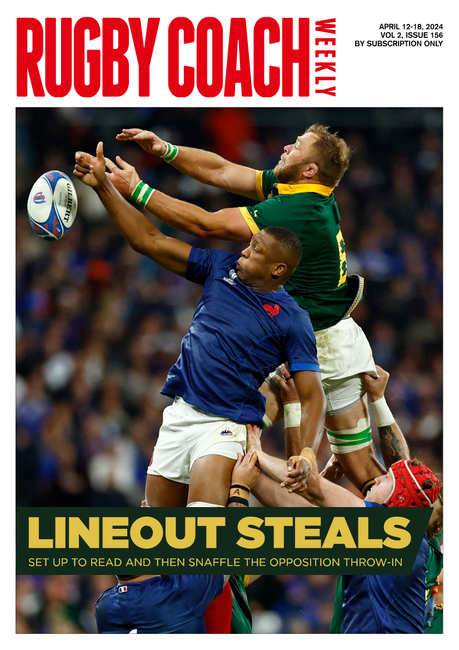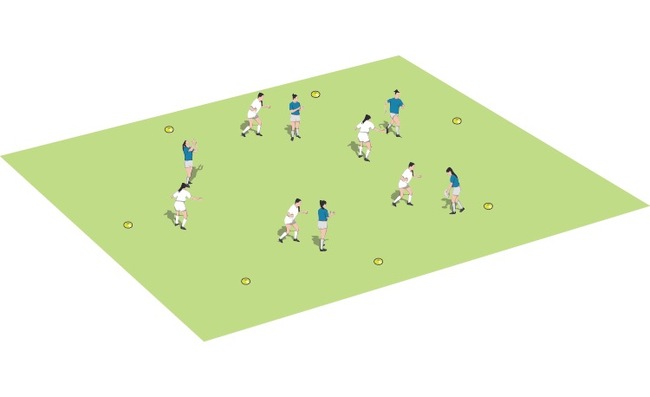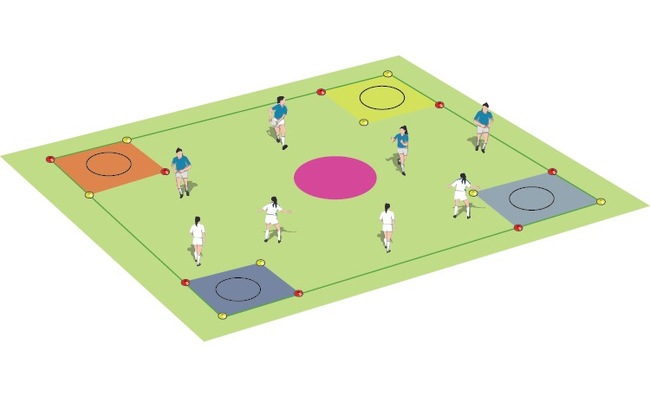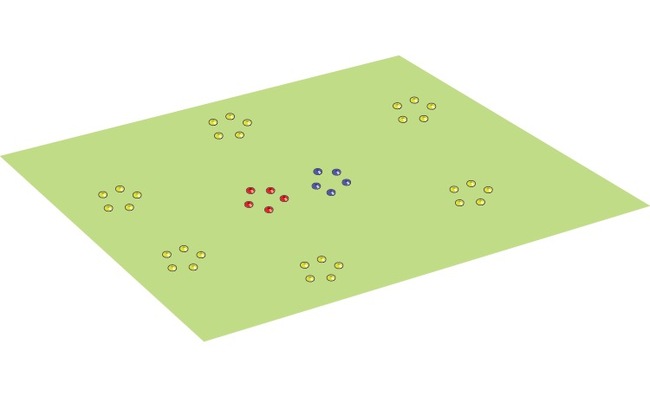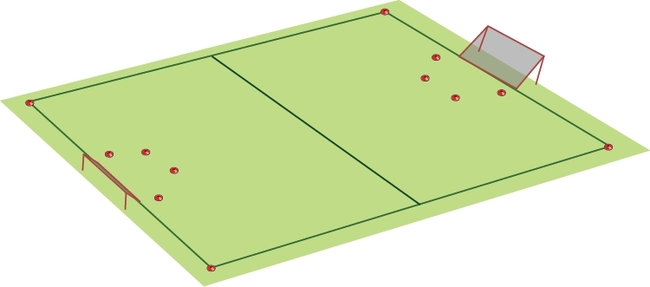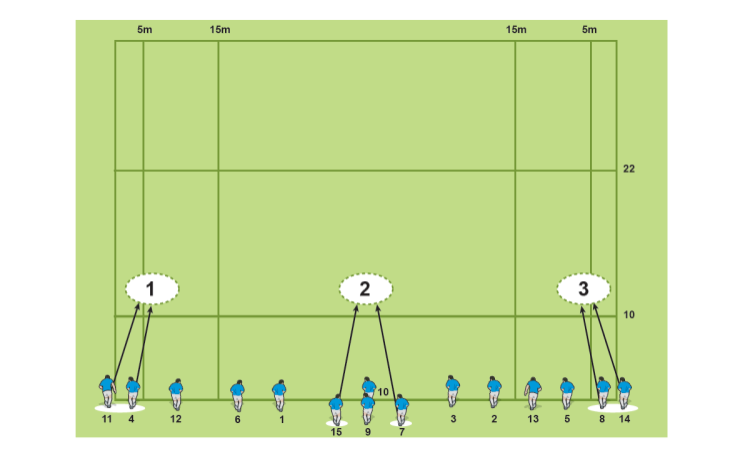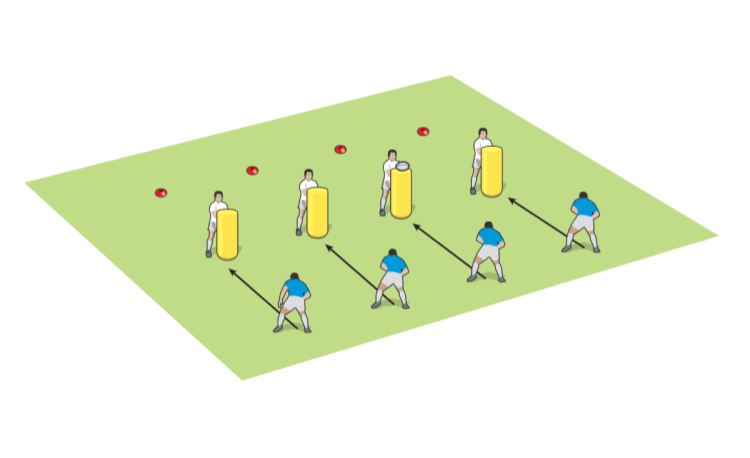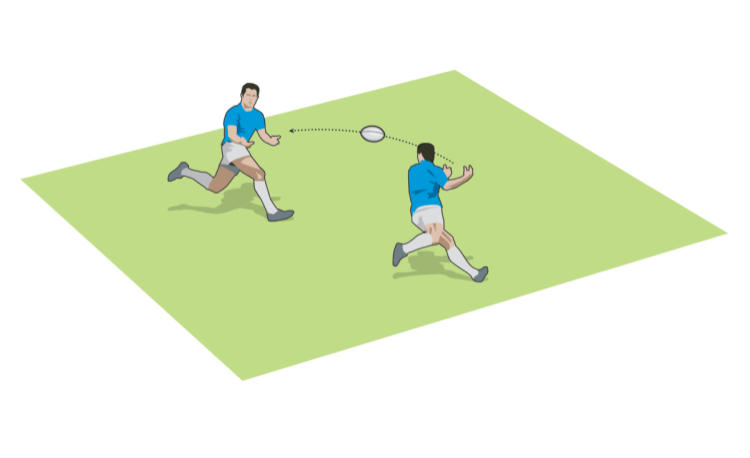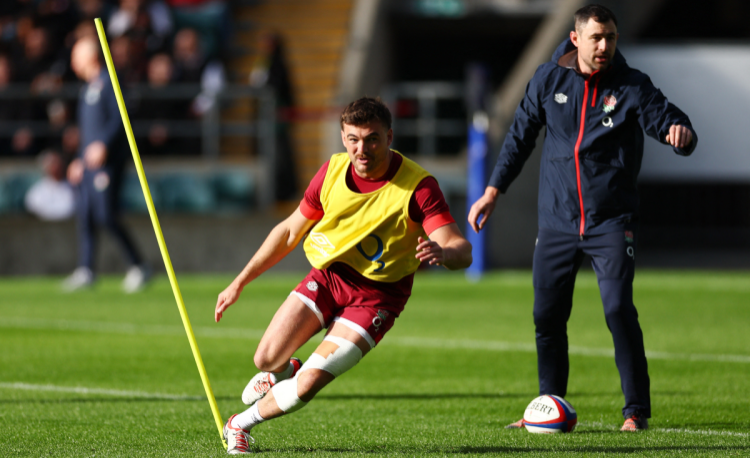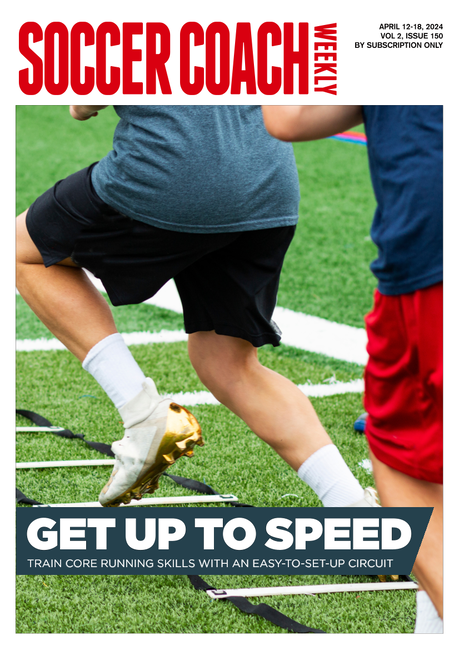You are viewing
1 of your 2 free articles
Fizz, buzz
Fun Rugby Gamesby Dan Cottrell
Develop passing techniques before unleashing an attacking and defence situation. A quick-fire game to challenge players to think about space and communication (it happens sometimes!)
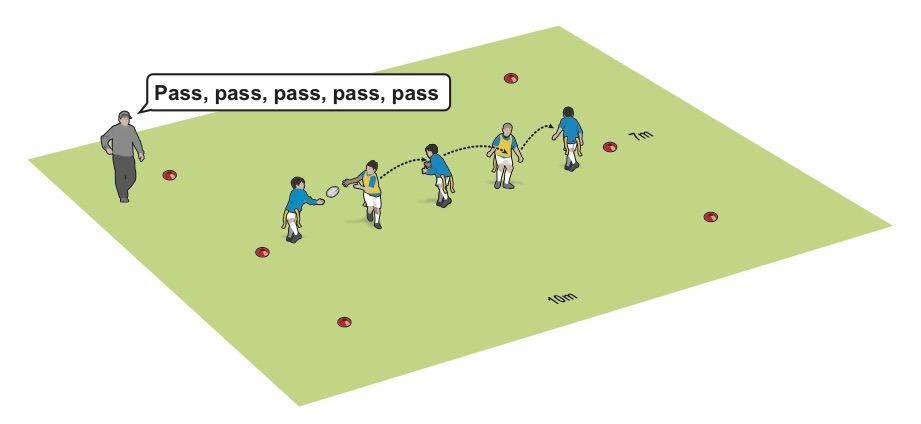
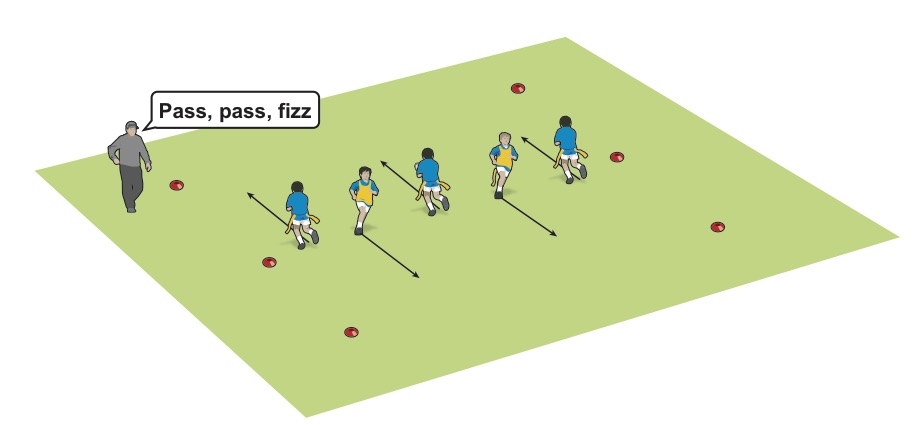
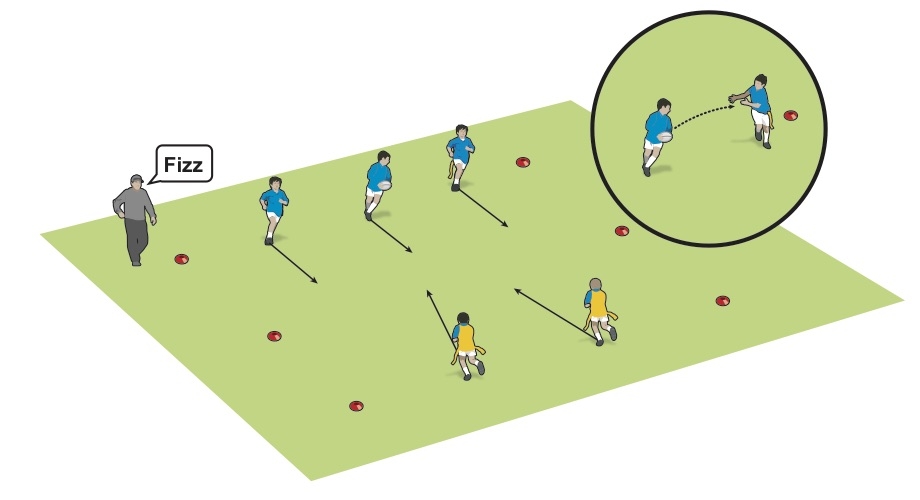
React to the situation and try to use team mates to win. Note, the uneven teams will cause challenges you don’t expect.
Cones, tags and a ball.
Have fun.
ACTIVITY

- A group of three face one way
- A group of two face the other
- The ball is passed along the line every time you say “Pass”
- When it gets to the end player, the players turn around and repeat back the other way
- If you shout Fizz or Buzz instead of Pass, the ball carrier and team mate(s) run forward

- In the meantime, the other players run forward too

- If you’ve called Fizz, the ball carrier turns and attacks, with the option to pass
- If you’ve called Buzz, when the ball carrier turns, they must pass immediately
CHALLENGE
React to the situation and try to use team mates to win. Note, the uneven teams will cause challenges you don’t expect.
SET UP
Cones, tags and a ball.
HOW TO DO IT
- Put three players facing one way and two the other in an alternate pattern, but in a line.
- Starting with a ball at one end, the player with the ball passes on your call: Pass. Naturally, they will have to pass the ball backwards a little bit.
- If you shout the word “Fizz” or “Buzz”, the current ball carrier and team mates race forward and then turn and attack. In the meantime, the other players run to the other end, turning to defend.
- A “Fizz” call means that the attacking player doesn’t need to pass, and run to score. Of course, they can pass if they want to.
- A “Buzz” call means the attacking player must pass once they have turned.
- A score, infringement or tag ends that go. However, if the ball carrier is tagged and can pass within two seconds, then play on.
- Play for three goes, and then rotate one from the group of three to the group of two.
TECHNIQUE
Have fun.
Related Files
Vol-1-Issue-560-D-Cottrell-fizz-buzz.pdfPDF, 802 KB
Newsletter Sign Up
Coaches Testimonials

Gerald Kearney, Downtown Las Vegas Soccer Club

Paul Butler, Florida, USA

Rick Shields, Springboro, USA

Tony Green, Pierrefonds Titans, Quebec, Canada
Subscribe Today
Be a more effective, more successful rugby coach
In a recent survey 89% of subscribers said Rugby Coach Weekly makes them more confident, 91% said Rugby Coach Weekly makes them a more effective coach and 93% said Rugby Coach Weekly makes them more inspired.
Get Weekly Inspiration
All the latest techniques and approaches
Rugby Coach Weekly offers proven and easy to use rugby drills, coaching sessions, practice plans, small-sided games, warm-ups, training tips and advice.
We've been at the cutting edge of rugby coaching since we launched in 2005, creating resources for the grassroots youth coach, following best practice from around the world and insights from the professional game.


